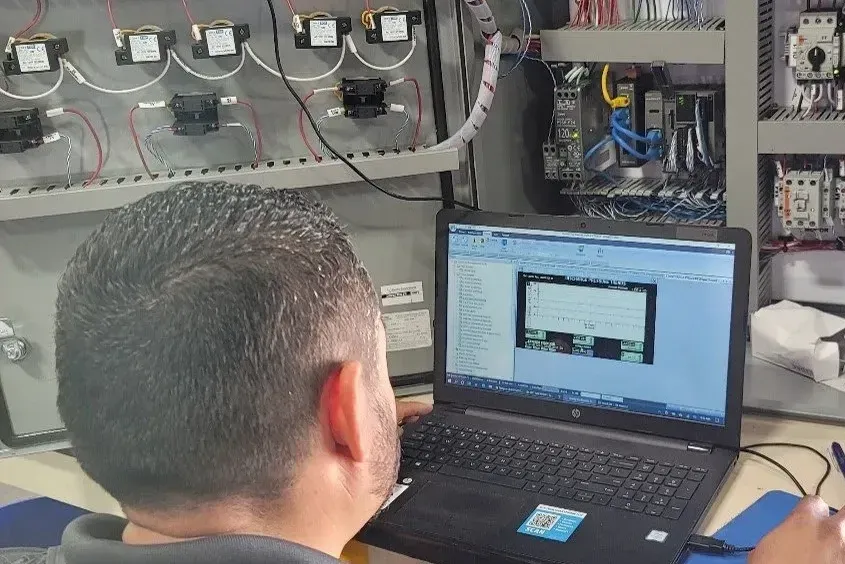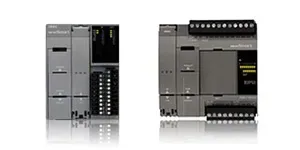What is a PLC? Let’s Demystify It!

Programmable Logic Controller (PLC): The Hidden Engine of Automation
Have you ever wondered how massive factories run like clockwork, with machines working in perfect harmony? Or how amusement park rides operate seamlessly with pinpoint precision? The magic behind it all often boils down to a nifty little device called the *Programmable Logic Controller (PLC).
Think of a PLC as the industrial world’s unsung hero—a robust, reliable computer that’s purpose-built to automate and control processes in the toughest of environments. Let’s take a closer look and unravel the secrets of this fascinating tech marvel.
So, What Exactly is a PLC?
A PLC is essentially the brain behind many automated systems. It takes in information from sensors and devices (inputs), processes this data based on a pre-written program, and then sends out commands to control machinery (outputs).
Here’s what makes PLCs extra special:
- They’re built tough to survive in challenging environments.
- They’re flexible and can be programmed for countless applications.
- They make automation smarter, faster, and more efficient.
The Building Blocks of a PLC
Imagine a PLC as a team of highly skilled workers, each with a specific job:
- The Brain (CPU):* This is the decision-maker, processing all the logic and instructions.*
- The Power Source:* Keeps the PLC running smoothly.*
- I/O Modules (The Hands and Ears):* These connect to sensors (inputs) and actuators (outputs) to gather and act on data.*
- The Programmer (You!):* Write the rules and logic that make the system work like magic.*
Where Can You Find PLCs in Action?
PLCs are everywhere, quietly working behind the scenes to make our modern world function. Here are just a few examples:
- Factories: Controlling assembly lines and robotic arms.
- Power Plants: Managing electricity grids and water treatment systems.
- Amusement Parks: Coordinating rides and ensuring safety.
- Food Processing: Running conveyor belts and overseeing quality control.
If it’s automated, chances are there’s a PLC involved!
Why PLCs Beat Traditional Systems
Here’s why industries love PLCs:
- Adaptability: They can be reprogrammed for new tasks easily.
- Reliability: Designed to handle extreme conditions without breaking a sweat.
- Scalability: Need more power or functionality? Just add modules.
- Efficiency: Keeps processes running smoothly with minimal downtime.
Let’s Break It Down: A PLC in Action
Picture this: You’re at a bottling plant. Here’s how a PLC ensures things run perfectly:
- A sensor spots an empty bottle at the start of the conveyor (input).
- The PLC triggers the motor to move the conveyor (logic).
- When the bottle reaches the nozzle, the PLC tells it to start filling (output).
- Voila! A perfectly filled bottle, ready for the next step.
And this cycle repeats, creating efficiency and precision without a hitch.
Wrapping It Up
PLCs might not wear capes, but they’re the heroes of industrial automation, making everything from manufacturing to utilities run like a dream. And the best part? They’re constantly evolving to tackle even more complex challenges.
Ready to dive deeper? In our next post, we’ll explore the "History of PLCs" and uncover how they’ve grown from humble beginnings to the technological powerhouses they are today. Stay tuned!
Other References
Basics of Programmable Logic Controllers (PLCs) - Overview
This resource provides a comprehensive introduction to PLCs, detailing their functions, components, and operational principles.
Programmable Logic Controllers (PLCs): Basics, Types & Applications
This piece delves into the different types of PLCs, their specific uses, and the advantages they offer in industrial settings.
What Is a PLC? An Introduction to Programmable Logic Controllers
This article provides an in-depth look at the history, development, and fundamental concepts of PLCs, making it a valuable resource for understanding their evolution.
Programmable Logic Controller Overview in Industrial Automation
This resource offers insights into the role of PLCs within the broader context of industrial automation, highlighting their integration and impact on efficiency.
Key Takeaways
- Definition and Role of PLCs
- PLCs are programmable computers designed to automate and control industrial processes.
- They act as the "brain" of automated systems, taking inputs, processing data, and controlling outputs.
- Unique Features of PLCs
- Built to withstand challenging industrial environments.
- Flexible and customizable for diverse applications.
- Enhance efficiency by automating processes smartly and quickly.
- Core Components of a PLC
- CPU (The Brain): Processes logic and instructions.
- Power Source: Provides operational energy.
- I/O Modules (The Hands and Ears): Interface with sensors and actuators.
- The Programmer: Writes logic and rules for operations.
- Applications of PLCs
- Found in manufacturing, power plants, amusement parks, and food processing.
- Commonly used for controlling assembly lines, managing utilities, and ensuring safety in automated systems.
- Advantages Over Traditional Systems
- Adaptability: Easily reprogrammed for new tasks.
- Reliability: Designed to handle extreme industrial conditions.
- Scalability: Modular designs allow incremental expansions.
- Efficiency: Minimizes downtime and optimizes operations.
- Real-World Example of PLC Functionality
- In a bottling plant, PLCs control conveyors, detect empty bottles, and trigger filling mechanisms, ensuring seamless operation.
- PLCs as Industrial Heroes
- Integral to modern automation, evolving to handle complex challenges and applications.
- Their importance spans across industries and continues to grow.


